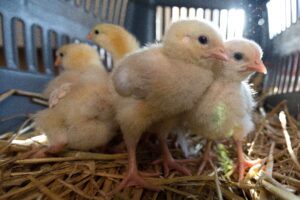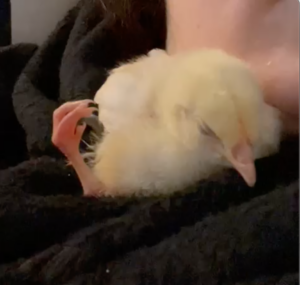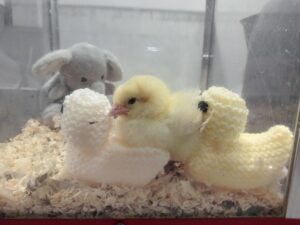Let’s get hatching projects out of classrooms!
When teachers undertake hatching projects with their students, most are unaware of the immense suffering that they cause for the animals involved and the impact they can have on children’s perception of animals.
Shockingly, the primary science National Curriculum encourages the use of hatching projects. We have written to the Secretary of State for Education, Gillian Keegan, urging her to remove this endorsement but no action has been taken.
Now we urgently need your help to demand that hatching projects are no longer promoted as a viable teaching tool.
What can I do to help?
Write to Gillian Keegan MP, Secretary of State for Education, requesting that the reference to hatching and rearing chicks be removed from the non-statutory guidance for the Year 5 National Curriculum science programme of study.
You can also share our “What’s wrong with hatching projects?” information sheet and our “Animal Welfare Law and Chicks Kept in Classrooms” legal report with any schools or nurseries who may be running or considering running hatching projects.
What are hatching projects?
During hatching projects, fertilised eggs, usually from chickens or ducks, are placed into artificial incubators to develop with no parent present.

The problems with hatching projects
Hatching projects cause physical and emotional suffering for the animals involved. Naturally, a mother hen turns her eggs several times a day, ensuring their correct development. It is extremely difficult for humans to replicate this, so leg deformities are frequent and heart-breaking. In nature, young birds will form strong attachments with their mother, who is completely absent during a hatching project.
When their purpose for projects has been fulfilled, many chicks find their way into the food industry where they live miserable, short lives, and suffer terrifying, painful deaths. Most children would be horrified to learn the fate of the birds they formed attachments with. These projects perpetuate the attitude that animals can be viewed as disposable objects rather than sentient beings with their own needs and feelings.
Penny the chick
Meet Penny the chick. Penny was born into a classroom filled with noisy children but no mother. Concerned parent and veterinary nurse, Hannah, noticed she was unable to stand due to a severe leg injury so she took her home to provide the medical treatment she needed.


Penny is one of the lucky ones. Sadly, there are hundreds, perhaps thousands, of birds like her around the UK, reduced to mere teaching tools and discarded once they have served their purpose.
Watch our interview with Hannah:
The impact of hatching projects on animal sanctuaries
Teachers or parents concerned about the fate of these animals may seek alternative arrangements for the birds. Some may find their way to animal sanctuaries, most of whom are already at capacity and simply do not have the resources to take in any more unwanted animals.
Watch our interview with Neil Winn-Williams at Foal Farm Animal Rescue Centre about how hatching projects have affected them.
A better, kinder way
Hatching projects have little value in terms of science education. The relationship between a mother hen and her offspring is a vital part of the reproductive cycle of birds, so hatching projects present an artificial and inaccurate picture of how birds are born and raised naturally.
We are encouraging teachers to use one of the amazing educational tools available which teach children how reproductive cycles work in the natural world, without simultaneously causing harm and perpetuating negative attitudes towards animals.
Many schools place nesting boxes on their grounds with cameras inside, so that students can view in amazement parent birds caring for their young. There are websites like WildlifeKate with live nesting cams set up in locations around the world. There are also 3D models and augmented reality apps which allow students to see inside an egg as it develops and learn about the amazing biology underpinning this process.